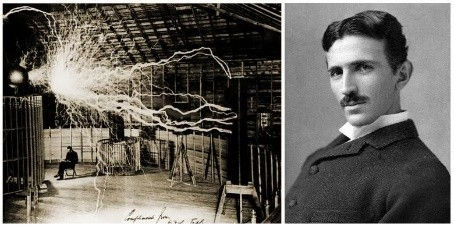A Classic Player: Maurice Evans, 1901-1989
- C. Clairborne Ray

- Oct 3, 2022
- 3 min read
By C. CLAIBORNE RAY

It is beyond ironic that a Player who, like Edwin Booth, built much of his fame on Shakespearean roles, notably Hamlet and Richard II, should inscribe himself in modern memory as an educated orangutan in the movies and a warlock on TV. Such is the fate of Maurice Herbert Evans, the great British-American stage actor who played Dr. Zaius in the Planet of the Apes movie series and Maurice, father of Elizabeth Montgomery's housewife witch Samantha, in the television series Bewitched.
Long before that, London and New York audiences knew him for a parade of famous roles in plays by the likes of Shakespeare, Shaw and Sherriff. He was born on June 3, 1901, in Dorchester, England, of Welsh extraction. His breakthrough role came as a doomed young World War I officer in R.C. Sherriff's smash hit Journey's End, beginning with the first experimental production alongside Laurence Olivier in 1927 and continuing through two years on the West End. He had already established himself as a solid actor in more than a dozen plays in 1927 alone. In 1934, he joined the Old Vic company, playing Hamlet, Richard II and Iago. His success in King Richard II was the springboard to Broadway, where he first appeared with Katherine Cornell in Romeo and Juliet, then as Richard II, Hamlet, Falstaff, Macbeth and Malvolio. He became an American citizen in 1941.
His favorite portrait, in uniform as the so-called G.I. Hamlet, was painted in the 1940s by Raymond Olivere, the artist who served with him, Carl Reiner and others in a World War II entertainment troupe. Volunteering, Evans was commissioned as a captain, put in charge of entertainment in a large part of the Pacific theater, and eventually promoted to major. He developed and starred in a project to bring Shakespeare to the common soldier, with other soldiers as actors. He left the painting to be hung in the club, and it is now displayed above the table in the Card Room. His papers also belong to The Hampden-Booth Theatre Library.
He later took his streamlined G.I. Hamlet, with more than 20 ex-servicemen in the cast, to Broadway for a successful run in 1945-46 -- one of his four Broadway Hamlets. The 1938 production was especially notable as the first uncut version on the New York stage, running a full five hours, with an intermission for a meal.
A frequent presence on Broadway, notably as the scheming husband in Dial "M" for Murder and the disappointed teacher in The Browning Version, Evans starred in several Shaw plays, including Man and Superman, Saint Joan,The Apple Cart and The Devil's Disciple, and was featured in movies like Androcles and the Lion and Rosemary's Baby. He also found time to win his second Tony for producing The Teahouse of the August Moon in 1953. (His first was a special Tony in 1950, for his work with the City Center Theatre Company.) He also produced No Time for Sergeants, with Andy Griffith. His last Broadway appearance came in 1962, in The Aspern Papers. Then he toured 69 cities with another eventual Player, Helen Hayes, in a program of excerpts from Shakespeare.
Evans was Shakespeare's greatest ambassador to early television, producing and starring in full-scale productions of Hamlet, Macbeth, KingRichard II, Twelfth Night, The Taming of the Shrew and The Tempest, all for Hallmark Hall of Fame, from 1953 to 1960.
His many other TV roles included The Puzzler in Batman. Oddly, though he pronounced his own first name Morris, his character in Bewitched was called Maw-REES.
Even his New York residence was theatrical. A converted stable at 50 West 10th Street, it was later sold to Edward Albee and after that to Jerry Herman. A longtime trustee of the Actors Fund, Evans retired in the 1960s to the Brighton area of England and died on March 12, 1989, in Rottingdean, East Sussex.

C. Claiborne Ray retired in 2008 as deputy obituary editor at the New York Times and wrote the Science Q&A column for Science Times until 2019. She has used The Players as her drawing room since 2014. She is chair of the Admissions Committee.



Great profile! Many aspects of his life & career I did not know - thanks for sharing!
Love to point out his G.I. Hamlet portrait when giving tours!